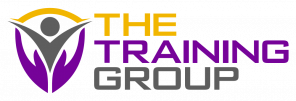Unit 1: Understanding roles, responsibilities and relationships in education and training
Learners will be taught how to analyse the application of pedagogical principles, use assessments, plan lessons and prepare for the classroom environment.
Understanding and using inclusive teaching and learning approaches in education and training
Planning to meet the needs of learners in education and training (Copy 1)
Assessing learners in education and training (Copy 1)
Using resources for education and training (Copy 1)
Unit 2: Teaching, Learning & Assessment In Education & Training (Copy 2) (Copy 1)
Learners will be taught about their responsibilities as educators, educational legislation, meeting the needs of the learners and how to teach in a student-centred manner.
Unit 3: Theories, Principles & Models In Education & Training (Copy 2) (Copy 1)
Learners will be taught ways in which theories, principles and models of learning can be applied to teaching, learning and assessment.
Unit 4: Wider Professional Practice & Development In Education & Training (Copy 2) (Copy 1)
Learners will be taught about the concepts of professionalism and dual professionalism in education and training and how they can apply this within the classroom.
Unit 15: Inclusive Practice (Copy 2) (Copy 1)
Learners will be taught how to review the impact of personal, social and cultural factors on learning and teaching.
Unit 17: Preparing for the mentoring role (Copy 2) (Copy 1)
Learners will be taught how to analyse the skills and qualities required for a the mentoring role teachers play in education.
Unit 25: Developing, using and organising resources in a specialist area (Copy 2) (Copy 1)
Learners will be taught how to analyse how theories, principles and models of inclusive curriculum design can be used to inform resource development in own specialist area.
No questions yet
Be the first to ask your question! You’ll be able to add details in the next step.
Ask a new question
Add an answer

Resource Classification & Storage
Resources can be sorted in various ways to enhance organisation:
– By Type: Consider the inherent nature of resources. Examples include physical items such as machinery, human resources like employees, intellectual assets like patents, or digital entities like software.
By Usage Frequency: Distinguish between resources that are in regular daily use, such as office stationery, versus those that are used occasionally, like event equipment.
By Ownership: This helps differentiate between company-owned items, rented or leased assets, and resources that are shared across departments or teams.
By Value: Some resources are critical to operations, like servers, while others might be supplementary. Recognizing this distinction aids in prioritization.
Storage of Resources:
The manner in which resources are stored often mirrors their classification:
Physical Resources: Tangible items can be stored on shelves or in cabinets. For larger items or bulk storage, warehouses may be appropriate, while valuable items might warrant safety lockers.
Digital Resources: Depending on their nature and the frequency of access required, they can be stored on local systems, in cloud storage solutions like Google Drive, or within specialized databases tailored for specific data types.
Human and Intellectual Resources: Information about human resources is typically stored in digital databases or Human Resource Management Systems (HRMS). Intellectual assets, on the other hand, find their home in patent databases or copyright offices.
Key Storage Considerations
Regardless of the classification or storage method, it’s crucial to ensure security, keeping resources safe from unauthorized access or hazards. Equally vital is the ease of accessibility, ensuring those who need the resources can retrieve them swiftly. As organisations evolve, storage solutions should be scalable to accommodate growth. Lastly, an efficient storage system ensures rapid retrieval, fostering productivity.



